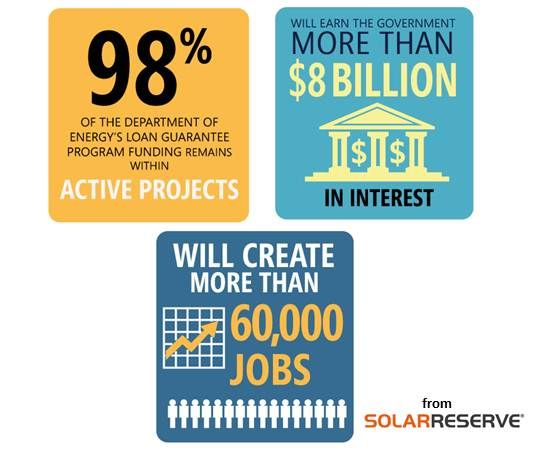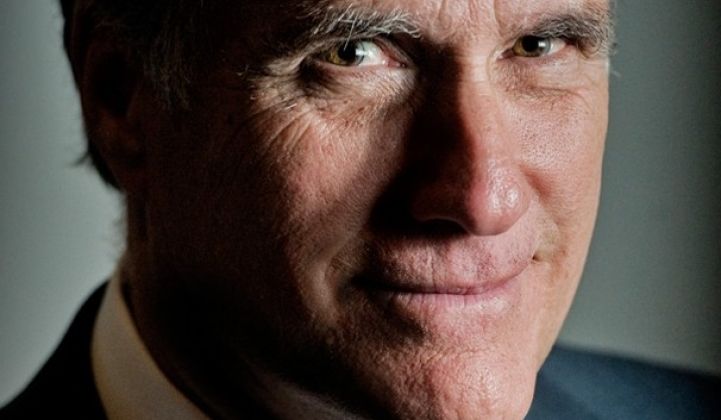Among the many numbers from the first Romney-Obama presidential debate was one in a remark Governor Romney addressed to the President. “In one year, you provided $90 billion in breaks to the green energy world.”
Later, Governor Romney -- who the pundit class declared the debate's winner -- addressed the Department of Energy loan guarantee program. “These businesses, many of them have gone out of business, I think about half of them, of the ones that have been invested in have gone out of business.”
The governor then used one of the zingers his campaign staff had told the press to watch for. “A number of them happened to be owned by people who were contributors to your campaigns. I had a friend who said you don't just pick the winners and losers, you pick the losers.”
The Romney campaign subsequently said the governor was referring only to 2009 and 2010 loans because "it takes time for a company to go bankrupt."
“The DOE Loan program has three parts, two of which were established in the George W. Bush administration and one of which was established in the Obama administration," Former DOE Director of Financing for Energy Efficiency and Renewable Energy and Capital E President Gregory Kats testified to Congress earlier this year.
The first part was a 2005, $10.3 billion Bush program “with two nuclear commitments.” The second was a 2007, five-loan, $8.4 billion program for “advanced technology vehicles manufacturing.” The third was part of the 2009 American Reinvestment and Recovery Act.
“Like other loan guarantee programs, Kits told Congress, the grants were provided “with the expectation that most funded projects would succeed commercially but that some would not.”
As of early 2012, Kits said, the program “approved 28 loans worth $16.1 billion dollars, and has so far experienced two highly publicized defaults (both in the fall of 2011): Solyndra and Beacon. These loans were for $535 million and $43 million, respectively.” The total defaults, he said, “are likely to net out to $300 million to $400 million. This is roughly 2 percent of the amount guaranteed.”
The later Abound Solar failure cost DOE $70 million, which would not increase Kits’ 2 percent conclusion.
Or, as GTM Research VP Shayle Kann expressed it on National Public Radio’s Marketplace after the debate, “The truly misleading and irresponsible claim is that anywhere near half of the companies taking advantage of these programs have gone bankrupt. Thousands of companies have benefited from these programs, and in spite of a very small number of very public failures, the vast majority of these companies remain operating -- and in many cases, thriving -- enterprises.”
By Governor Romney’s own report, Bain Capital’s success rate was 80 percent. This makes him statistically better at "picking losers" than the Department of Energy.

A little-remarked-on point noted to GTM by SolarReserve CEO Kevin Smith recently is that the loan programs’ interest payments will likely net federal taxpayers some $8 billion in revenues. That, of course, is in addition to the benefits of putting some 60,000 people to work doing good things for the nation’s future.
Governor Romney’s cronyism accusation was answered by the Washington Post: “Romney said that Obama sent money to firms whose executives had donated to his campaign. That is true in the case of Solyndra, but while House Republicans have harshly criticized the administration for that, investigations have not revealed any direct link between the loans for Solyndra and campaign support for the president.”
DOE loan recipients John Woolard, CEO of BrightSource Energy, and SolarReserve’s Smith both denied to GTM any personal relationship with the White House that might have been associated with their funding.
GTM Research’s Kann also told National Public Radio’s Marketplace that the $90 billion “includes a wide variety of programs ranging from renewables to energy efficiency to high-speed rail.” The programs, Kann added, “take a number of forms, from tax credits to R&D grants and everything in between.” They were “not all introduced by the Obama administration,” Kann said, and “were not all offered in just one year.”
The White House website broke down the investments in more detail:
-- $29 billion for energy efficiency, including $5 billion for improvements in the homes and apartments of low-income households
--$21 billion for renewable electricity generation, including wind turbines and solar panels
-- $10 billion for grid modernization, including millions of “smart meters” that read themselves, eliminating the need for meter readers
-- $6 billion to help establish factories to make batteries for electric cars and other components of advanced vehicles
-- $18 billion for fast trains
-- $3 billion for research and development into capturing and sequestering carbon dioxide
-- $3 billion for job training and scientific advances in green energy
-- About $2 billion to help build wind turbines, solar panels and similar “green” products



